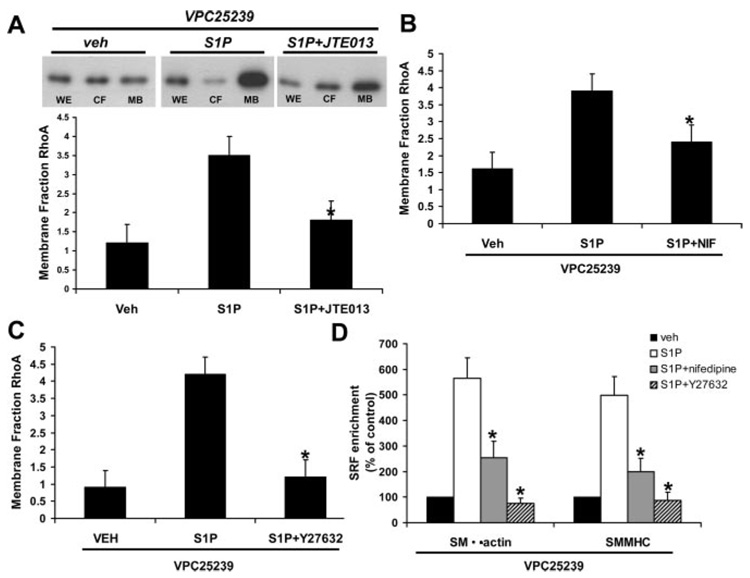Figure 6.
S1P2 signals through L-type VGCCs and ROK to regulate SRF binding to intact chromatin. SMCs were pretreated VPC25239 to block S1P1/S1P3 for 60 minutes before treatment with S1P. Western blot for RhoA was performed on whole cell extract (WE, loading control), cytosolic (CY), and membrane detergent-soluble particulate fractions (MB) and densitometry analysis performed. A, SMCs were stimulated with S1P for 12 hours in the presence or absence of the S1P2 antagonist JTE013 (30 minutes pretreatment, n=4). B, SMCs were stimulated with S1P for 12 hours in the presence or absence of the L-type voltage-gated Ca2+ channel blocker nifedipine (1 µmol/L, 30 minutes pretreatment, n=3). C, SMCs were stimulated with S1P for 12 hours in the presence or absence of the Rho kinase inhibitor Y27632 (10 µmol/L, pretreatment 30 minutes, n=3). *Significant difference in RhoA translocation to MB compared with vehicle and P<0.05. D, ChIP assays for SRF enrichment of SMα-actin and SMMHC CArG promoter regions. SMCs were pretreated with VPC25239 and nifedipine (1 µmol/L) or Y27632 (10 µmol/L) for 30 minutes and then stimulated with S1P (N=3). *Significant difference compared to S1P treatment, P<0.05.

